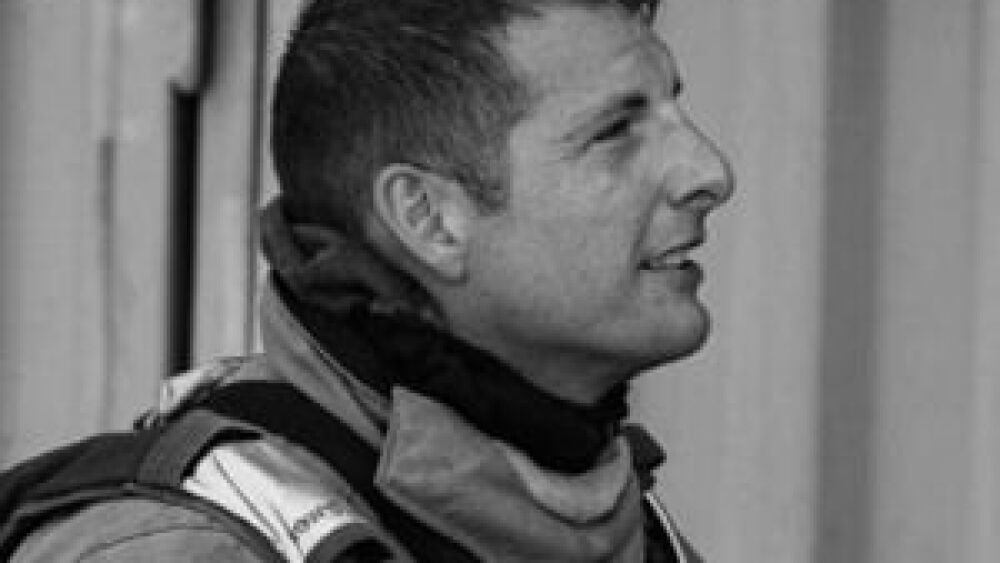Fire Chief Bob Horton clearly struck a nerve with his recent FireRescue1 article, “’This is not what I signed up for’: Why some firefighters simply don’t understand the job.” Not only was the article one of our most read of the year but it also blew up on Facebook, with hundreds of comments from FireRescue1 readers.
Compared to the debates unfolding online over vaccine mandates and other hot button issues where clear lines are drawn in the sand, the debate over the expectations of firefighters, the motivations to join the ranks and how fire departments market the job was far more nuanced, with some interesting points of view.
As such, we turned to our trusted FireRescue1 contributors – fire service leaders themselves – to review Chief Horton’s article and the resulting comments, then share their perspective. Here’s what they had to say.
Fire Chief Jason Caughey: “We need to paint a ‘real’ picture of what the job is”
“I’ve always held that being a firefighter is being a servant of the community.” This comment stood out to me, as it identifies that we as a fire service are to be servants to our community, which is very true, and for most of the fire service, I believe that we all recognize that we are here to help our community in their time of need regardless of the call type.
The question for me is do we do an injustice to our new hires by not clearly painting a picture of what the “job” is today? Most fire departments – volunteer, career or combination – recruit by making a flashy video or promotional pamphlet that features the “big fire” or the cool rope rescue. In fact, several years ago, I had a conversation with an editor of a large fire magazine that stated they had to feature the cool, sexy photo on the cover to get firefighters to pick up the magazine. Organizationally, we need to paint a real picture of what the job is – and this should happen during the recruitment, and it must happen during the initial training.
Teach them about customer service and Mrs. Smith and her desire to have trained professional responders who are nice to her. She does not care what color the fire truck is, if you use smooth bore or combination nozzle, or if your helmet is leather or plastic or that you have a “sick” mustache. What she (and the rest of our community) cares about is the service, the timely response, and the well-trained, humble firefighters who care.
As a service, let’s get back to our roots, focus on service to our community regardless of call type. Stop believing the hype and start performing with passion, not only for the fire calls but all calls.
Battalion Chief Vince Bettinazzi: “Other duties as assigned” applies to us, too
“Other duties as assigned.” This is often the last sentence in nearly every job description. It permits some flexibility for supervisors to assign additional, unexpected tasks. The fire service is no exception. As public servants, we routinely find ourselves meeting the customer service needs of the citizens we took an oath to protect. Sadly, we may not like or expect to find ourselves completing these assignments, but they are necessary for an occupation that is deeply committed to solving people’s problems. Make someone’s day, and change an otherwise negative outcome.
“We don’t fight fires anymore.” This comment makes me cringe. So, statistically, fires across the United States are going down, heard that! The “typical” percentage breakdown of structure fires for an organization per year is 1%, got it. There is still a quantifiable number of structure fires in that 1%.
We owe it to ourselves to train and prepare for the fires that we will respond to every year. These are the calls that matter, where life and valuable property can truly be saved by motivated, competent firefighters. And even if your department didn’t run a single hot job the last 3 years, we cannot adopt this mentality, using it as a mantra for not expecting the bell to go off on your tour. The people that depend on us deserve more.
Linda Willing: “The title ‘firefighter’ has always been misleading”
One of the things I loved most about being a firefighter was that you never knew what was going to happen during any given shift. I had previously worked (briefly) in jobs where the days and the tasks were predictable. Some people want this in their lives. Not me! For this reason, I totally connected with the comment, “We are all professional problem solvers. The problems have changed and the fire service has adapted.”
The title of “firefighter” has always been misleading. For many years, the fire department has been the go-to response agency for anything other than strictly law enforcement incidents (and sometimes firefighters are involved in those as well). An interesting topic of conversation among any group of firefighters is asking the question: “What is the strangest call you’ve ever been on?” Most firefighters will eagerly tell you their stories, and they are rarely just about fires.
The best firefighters are generalists, and as another commenter said, they “take pride in the fact that my crew could work through any situation thrown at us.” Of course, you want people with special skills and expertise on the job, and of course everyone should have basic competency in critical areas. But what you most want is people who love being challenged, who look forward to learning something new, and who understand that their role is about public service in any form that might be needed.
Fire Captain/Paramedic EMS Coordinator Rom Duckworth: “Firefighters are only surprised if they have not been paying attention”
“What your community deems necessary (within reason) for you to accomplish is what your department is there to accomplish.” As uncomfortable as it will make some firefighters, this comment hit the nail on the head. Firefighters are servants of the community.
What the community wants from emergency services will change as the community changes, but it usually changes slowly over time. Firefighters are only surprised if they have not been paying attention. The concept of the fire department as an “all-hazards” service has been around since the 1990s, well before many current firefighters began their careers. While it happens, it is rare that firefighters suddenly find themselves being asked to transition from a job that is solely fire suppression to one that includes non-emergency operation, public education, EMS or other tasks that some consider “less than exciting.” Further, firefighters must be able to differentiate between things they would like to do all day long and the less exciting parts of their job that are still necessary and important.
Firefighters tend to be the kind of step-up people who are ready to solve any problem. What they typically ask for in return is for there to be meaning in what they do. With some tasks, the importance of what they are asked to do may not be immediately apparent.
The chief’s job is to listen to the community and prepare the department to meet their needs, including making sure the job description is clear. The company officers’ job is to help firefighters find meaning and relevance in what they do on a daily basis, even when doing that job won’t land their picture on the front page of the local paper.
Regardless of the size or structure of the department, a firefighter’s job is to serve the community as it needs to be served and, if the time comes when the firefighter cannot stomach what the community is asking them to do, the firefighter may need to move on to another department or, more likely, to another profession.
Fire Chief Gary Ludwig: “We are in the business of taking care of people”
We are terrible at marketing to people who to apply to be firefighters. Most flyers, billboards or advertising show a picture of firefighters with smoke and flames licking at them at they push forward with a hoseline. The picture is intended to show the glory, the high-intensity and the adrenaline of being a firefighter. Then they get onto the job and they find out the vast majority of calls they respond to are EMS calls, of which the vast majority are low priority, of which an even smaller percentage border on the ridiculous, such as someone who can’t reach their toenails to cut them, someone who has had a rash for three weeks, or the one I responded to in St. Louis many years ago when someone had chest pain for 17 years, and one night it stopped, and they got worried that something was wrong, so they called 911.
The marketing pictures we should be showing on job announcements is a firefighter treating someone on an EMS call or carrying a stretcher.
I meet with all new firefighters on their first day, at the start of the day. I have nine new firefighters starting soon. I have a list of things I talk to them about, including asking them what they expect to see and do as a firefighter. Unless they are coming from another fire department, those coming into the profession typically answer that they will be fighting fire. I set them straight on the first day, explaining that the majority of calls are EMS and that we are in the business of taking care of people.
Perhaps we should advertise firefighter jobs as a paramedic job announcement, and in small lettering add, “You go to an occasional fire.”


















